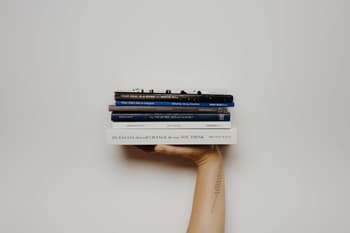In Short
- Copyright in Australia is automatic and protects original literary works like books and articles for the life of the author plus 70 years.
- As the copyright owner, you control how your work is used, but moral rights, like attribution, cannot be transferred.
- Clear agreements are essential for freelance and employment situations to define copyright ownership.
Tips for Businesses
To avoid copyright disputes, always clarify ownership terms in writing when working with writers or contractors. Ensure contracts specify who retains copyright and under what conditions it can be used or licensed. Keeping detailed records of creative processes and agreements can help protect your rights and resolve conflicts efficiently.
As a writer, your words are your most important creative asset. So whether you are a journalist, blogger, novelist or poet, protecting your written work is crucial. In Australia, the law grants you automatic copyright protections to publish, use, adapt and distribute your original literary works. Understanding your rights and how to enforce them is essential to safeguarding your creative works from unauthorised use or exploitation. This article explains how copyright protects writers in Australia and how you can enforce these rights.
What is Copyright Protection?
In Australia, the Copyright Act 1968 (Cth) governs copyright. Copyright protects the expression of writers’ ideas as, among other things, original literary works. Literary works include:
- books;
- articles;
- poetry;
- song lyrics;
- screenplays; and
- novels.
Copyright protection in Australia is free and automatic. Therefore, you do not need to register your work for protection like you would for a trade mark, design or patent.
However, if you want copyright protection in other countries, you should check whether it applies automatically. For example, the United States has systems for registering copyright material.
As a copyright owner, you have exclusive rights over your work, such as the ability to:
- use;
- modify;
- copy;
- perform; or
- license your work to others.
However, copyright does not protect:
- ideas or titles;
- writing styles; or
- techniques.
The Copyright Act also provides moral rights that protect your work against false attribution and derogatory treatment. Like copyright, moral rights apply automatically to your literary work. Unlike copyright, you cannot assign your moral rights to another. Moral rights include the right:
- to be credited as the author of the work;
- against false accreditation; and
- of integrity or the right not to have the work distorted.
What is Copyright Ownership?
Generally, the creator of a work owns the copyright in the work. However, this is not always the case. For example, if your employer asks you to write an article, they will typically own the copyright in the article, as you created the work in the scope of your employment. There may also be a provision in your employment agreement providing that your employer owns the copyright in any work you create for them. In this case, your employer can choose how to use, modify and distribute the work.
Continue reading this article below the formCan More Than One Person Own Copyright?
Two or more people can jointly own the copyright of a literary work. For example, if you co-author an article with another writer, you may jointly own the copyright in the article. For joint ownership of copyright, the contribution of all owners must be significant and original. How ownership is shared can be equally or unequally divided depending on the arrangement.
If you are a freelance writer or a contractor, whether or not you own the copyright in the work you create depends on your agreement. To avoid any issues about copyright ownership, it is best to set out the terms at the outset and ensure all parties are on the same page.
How Do I Assign or License My Rights?
If you are the copyright owner of your work, you can license or assign your copyright. The critical difference between licensing and assigning your copyright relates to ownership of the work. Assigning your copyright involves transferring the rights afforded to you to another party. Upon assigning your copyright, the other party becomes the copyright owner of your work. They can then use, adapt and distribute your work as they please. For example, if you write for your employer, your employment agreement will likely include a copyright clause assignment.
By licensing your copyright, another party can use your work while you remain the owner. Mutually negotiated terms govern the relationship between you and the other party using your work. Terms of the licence may include payment in the form of royalties. For example, if you write a book and intend to publish it, your publishing agreement will license your copyright to the publisher so they can use, print, publish, and distribute your work.
Unlike the economic rights in copyright, you cannot assign or transfer your moral rights. However, you can provide consent for another party to ‘infringe’ your moral rights. For example, you can give consent for a publisher to publish your book under a pseudonym.

Your business’ brand represents your values, identity and reputation. Learn how to create a successful brand and protect it.
Preventing Infringement
You can take several steps to prevent someone from exploiting your work and infringing on your rights. These include:
- adding the © symbol to any literary work to show others that you are aware of your rights and serious about protecting them;
- keeping a record of your creative process, especially if you need to prove ownership of the work;
- clearly setting out the terms and conditions of any agreements and reviewing them before granting anyone your copyright; and
- documenting who you provide a licence to or give permission to use your work.
Enforcing Your Rights
If you find someone using your work without permission, you can take legal action against them and enforce your rights. You can start by sending the infringing party a letter of demand. The letter should:
- state that you own the copyright;
- identify the infringement;
- allow the other party an opportunity to rectify the infringement; and
- provide the infringing party with a course of action.
We recommend consulting an intellectual property lawyer to assist you with drafting and sending a letter of demand.
Suppose the infringement is still not rectified before taking legal action in court. In that case, you can solve the issue by exploring alternative dispute resolutions (ADR). ADR may be quicker and more flexible than going to court, but both parties must agree to this as an alternative to court proceedings. If the issue escalates, you may consider taking the matter to court.
Key Takeaways
As a writer, you must understand how copyright operates in Australia and how to protect and enforce your rights. Copyright is an automatic right afforded to the creator of an original literary work. However, a creator of a work may not always own the copyright. If you own the copyright in your work, you can assign or license your rights to another party so they can use your work. To prevent others from infringing on your rights, you can proactively notify people of your copyright ownership and set clear terms in any agreements. If someone infringes your rights, you can:
- send a letter of demand;
- engage in ADR; or
- as a last measure, take them to court.
If you need assistance protecting your copyright, our experienced intellectual property lawyers can assist as part of our LegalVision membership. For a low monthly fee, you will have unlimited access to lawyers to answer your questions and draft and review your documents. Call us today on 1300 544 755 or visit our membership page.
Frequently Asked Questions
Copyright is the automatic legal protection given to the expression of original ideas in literary works such as books, articles or scripts. Copyright does not protect the ideas themselves.
Copyright arises automatically for original literary works in Australia. There is no need to register formally or apply for protection.
We appreciate your feedback – your submission has been successfully received.











